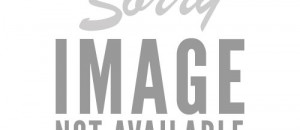Johnson & Johnson (JNJ) has a market cap of over $300 billion, making it the largest publicly traded health care company and 6th largest publicly traded US company overall. Johnson & Johnson has a streak of 30 consecutive years of earnings increases; the longest streak of increasing earnings I have encountered. In addition, the company has 52 consecutive years of dividend increases.
When I last analyzed Johnson & Johnson I was impressed by their strong pharmaceutical sales growth. Johnson & Johnson is the focus of part 52 of the 54 part Dividend Aristocrats In Focus series. The company's business operations are analyzed below.
Business Overview
Johnson&Johnson divides its operations into 3 large segments: Consumer, Pharmaceutical, and Medical Devices & Diagnostics (referred to as MD&D from here on out). Each segment's percentage of total revenue contributed to Johnson & Johnson through the first 9 months of fiscal 2014 is shown below:
Johnson & Johnson's consumer segment is its smallest despite controlling well-known brands including: Johnson's, Bebe, Aveeno, Neutrogena, Band-Aid, Bengay, Neosporin, Listerine, Tylenol, Motrin, Benadryl, Mylanta, Zyrtec, Nicorette, Pepcid, Splenda, and Visine. When a segment generates $10.89 billion in sales over three quarters, and it is the smallest company segment, that speaks to the size and success of Johnson & Johnson rather than the consumer segment being ‘small'. Johnson & Johnson's consumer segment generates about 65% of sales internationally, with 35% coming in the US.
The company's pharmaceutical segment is its largest, generating over 40% of total company revenue. The segment has generated $24.3 billion in sales through the first 9 months of fiscal 2014. The company's top 5 pharmaceuticals based on percent of pharmaceutical sales generated through the first 9 months of fiscal 2014 are shown below:
Johnson & Johnson's top 5 pharmaceutical products make up 48% of its total pharmaceutical revenue. Juxtapose this with AbbVie (ABBV), whose top pharmaceutical product generates 70% of total revenue. Johnson & Johnson's pharmaceutical portfolio is well diversified from a product standpoint as well as geographically. The company generates 54% of pharmaceutical revenues in the US and 46% internationally.



